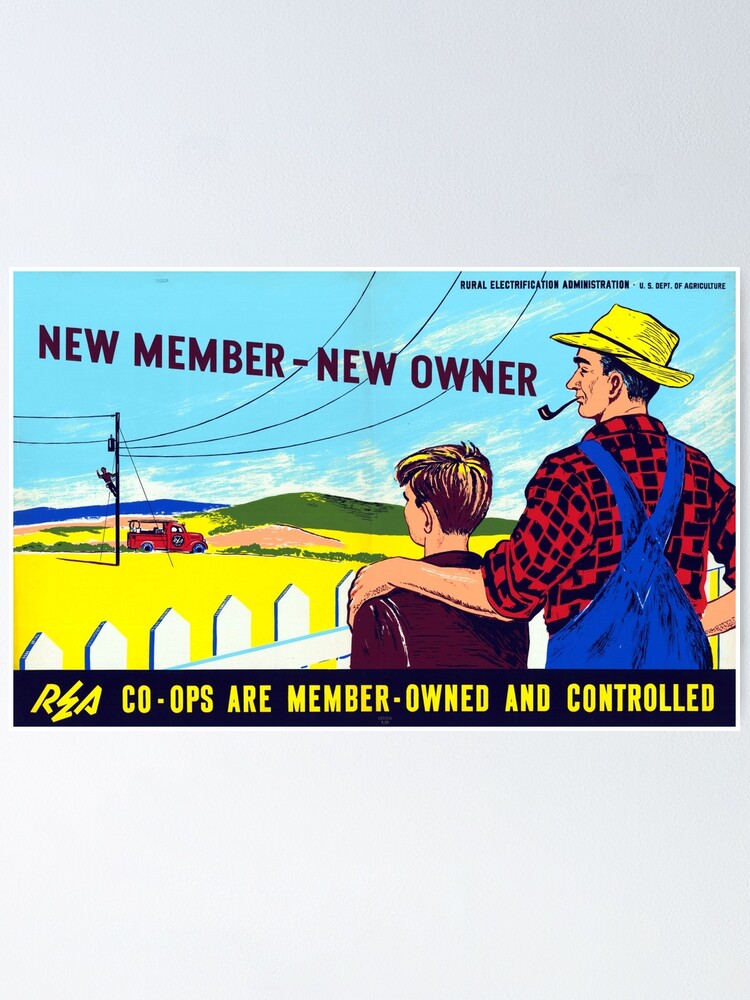History of Why Electrical Coops and Community ISPs Should Cooperate

First of all, let’s recognize that Broadband Internet should be a utility like electricity. Also, investor owned utilities that control electricity are performing far worse than municipal electricity, or cooperatively run electric utilities. There is commonality in the struggle over rights of way, whether you are running electrical lines or building a Broadband Internet network. The following is a rather long quotation, but it is copied here because it is an excellent description of the differences between privatization and cooperative efforts.

The People’s Pipes
In 1935, the residents of Chattanooga, Tennessee, were living in one of the poorest parts of the country in the middle of the Great Depression. Among the many things in distressingly short supply was electricity. Power, long available in the big cities, remained scarce in rural areas like the Tennessee Valley. This wasn’t an accident. Rather, it reflected a basic business logic. Private monopolies dominated the electricity market. This “power trust” was notorious for refusing to serve communities it didn’t consider profitable, and for price-gouging the ones it did.
So Chattanoogans decided to take their power supply out of private hands. They voted overwhelmingly for a municipal bond issue that funded the creation of a city-owned electricity distribution system called the Electric Power Board. The utility itself wasn’t the only part that was public; so was the current that coursed through it. The Electric Power Board would distribute electricity generated by the new Tennessee Valley Authority (TVA), a federal corporation created by the Roosevelt administration to electrify the region.
Seventy-five years later, Chattanooga embarked on another experiment in public provision. In 2010, the Electric Power Board, now rebranded EPB, began offering broadband service. More specifically, it began offering the fastest broadband service in the country: 1 gigabit per second, more than two hundred times faster than the national average at the time. These speeds gave the network its nickname: “the Gig.”
The story of the Gig began two years earlier, when EPB—which remains one of the largest publicly owned electric distribution utilities in the country—began building a “smart grid.” Funded by a bond issue and a federal stimulus grant, this undertaking promised to make the grid more efficient by embedding sensors and other digital devices that monitored the system in real time. Problems could be detected early, which would help reduce outages and improve reliability.
The smart grid didn’t just end up saving EPB money. It also handed them the infrastructure they needed to become an ISP. The smart grid ran on a fiber-optic network, which is what enabled the monitoring devices to communicate. The same network could be repurposed to offer internet service as well. The speeds were fast because fiber already ran all the way to people’s homes—an architecture known, unsurprisingly, as “fiber to the home.” Rather than limping along a creaky telephone line or a coaxial cable across the “last mile” between Chattanoogans and their ISP, data could travel at the speed of light. The same technology used to shuttle packets from one continent to another through the backbones of the internet was now handling traffic along Chattanooga’s last mile.
In the years since, the Gig has become the most famous municipal broadband network in the country. It has also become one of the country’s most popular ISPs, by charging reasonable rates for some of the fastest residential speeds in the world. Moreover, it makes access a priority: low-income families are eligible for a special plan that gives them 100 megabit-per-second service for less than half the standard rate. EPB had hoped to offer it for even less, but a state law prohibits utilities from selling services below cost to prevent them from undercutting private firms.
While the Gig is especially well known, it is far from unique. The Institute for Local Self- Reliance estimates that more than nine hundred communities across the United States are served by publicly or cooperatively owned networks. Most are under municipal ownership, like the Gig. Many others are operated by rural electric and telephone cooperatives that trace their origins to the New Deal, when the Roosevelt administration seeded them with federal loans as part of the same rural electrification campaign that saw the creation of the TVA. Such cooperatives are owned and controlled by their members, who are also the users of their services.
Publicly and cooperatively owned “community networks” do things that private ISPs can’t. First, they can supply better service at lower cost. A group of Harvard researchers found that “community-owned fiber-to-the-home (FTTH) networks in the United States generally charge less for entry-level broadband service” than private providers. This is because, unlike their corporate counterparts, they don’t exist to enrich investors. But their affordable rates also reflect a deeper fact: that community networks are guided by a different philosophy. “Community-owned ISPs typically regard the provision of high-speed Internet access as an end in itself and a means to achieving other community benefits,” observed the Harvard researchers. In other words, they tend to focus on social needs, such as universal connectivity, rather than profit maximization.
Internet for The People: The Fight for Our Digital Future by Ben Tarnoff






“Whether your co-op is considering or already delivering broadband to your community, NRECA can help. From determining the feasibility and legal implications of adding broadband services to your business to understanding funding opportunities and regulatory impacts—we offer our members a wide range of resources, case studies, research and guidance to help you make informed decisions. For co-ops already in the telecommunications arena, we offer NRECA Broadband, a specialized level of NRECA service designed to position your business for success.”
https://www.cooperative.com/topics/telecommunications-broadband/Pages/default.aspx
Additional reading:
https://www.fiercetelecom.com/broadband/rural-electric-co-ops-are-fastest-growing-group-broadband-providers
https://www.electric.coop/issues-and-policy/broadband
“More than 250 electric cooperatives are deploying or developing plans to deliver broadband service to their consumers, creating new ways for rural communities to live, learn and earn.
Expanding rural broadband access remains a significant bipartisan objective. Electric co-ops are working with policymakers to improve broadband maps, better identify unserved and underserved communities, and successfully bridge the digital divide. NRECA supports increased federal funding for rural broadband, improvements in data collection and mapping, and an increase in the minimum definition of broadband speed to 100/100 Mbps.”